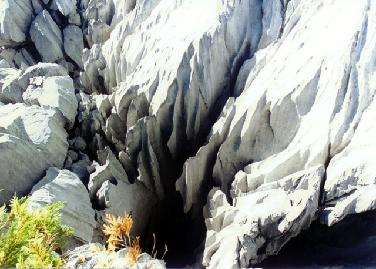Many people have question about Karst, What is Karst?
Karstic landscapes are found all over the world, ranging from dotted hills to sinkholes, as can be found in parts of the central United States. The term “karst” refers to a particular type of landscape resulting from the dissolution of soluble rocks, including limestone and gypsum. The landscape is characterized by natural features such as caves and springs that feed more than 25% of the world’s population. The karst formation process is a geological process that takes many years, resulting in unique surface and subsoil formations, some of which form drainage systems and complex underground caves. Around 10% of the earth’s surface is occupied by the karstic landscape.
Interesting to Read: 25 forbidden places to visit in the world
Karst formation and Skinhole
The karst formation process is linked to what is known as the “carbon dioxide cascade”. The process takes place when the surface of the basements, especially around cracks, is degraded by acidic water. Karst formation varies from region to region. As rain passes through the atmosphere, carbon dioxide dissolves in the water. Once rain droplets reach the surface, water enters the soil, dissolving more CO2to form weak carbonic acid water.
The infiltrated water erodes cracks and crevices in the rock. With the constant supply of carbonic acid, carbonate rocks such as limestone and gypsum begin to dissolve. The openings on the basement will become larger, with an underground drainage system that will begin to develop, allowing large amounts of water to pass and further increasing the rate of karst formation.
Interesting To Read: 9 Islands that are banned for public
Importance of Karst Topography
The karstic formation process can result in the formation of several large or small features both at the surface and below ground. On the surface, small elements such as corridors and limestone coatings may be formed in areas having a loose surface. Features such as sinkholes, vertical wells and missing streams are common on medium-sized surfaces.
Some of the large-scale karst features include karst valleys and poljes. Complex systems of underground drainage and large caverns and cave systems are formed below the surface. Another notable karst topography is the common makatea surface in the tropics, formed by erosion along the limestone shoreline.
Also Read: Deadliest and Dangerous Beaches
karst topography Map
Although karst features are scattered throughout the world, especially in areas containing soluble rocks, some features require intense searching to be noticed. The Nullarbor Plain in Australia is the largest limestone karst in the world. It occupies an area of approximately 77,000 square miles. Slovenia is one of the most exposed chasms in the world. Highland Rim in the western United States is the second highest karst hazard in the world. The Mexican regions of the Yucatan Peninsula and Chiapas are home to some of the most important karst.
Environmental problems induced by karst
Shallow aquifers in karstic areas are vulnerable to groundwater contamination, particularly through agricultural activities and the disposal of solid wastes. Structures built in the sinkholes may be flooded, which could be aggravated by increasing surface runoff or by decreasing storage capacity due to sink filling. The collapse of mine shafts can result in costly destruction of surface properties. The collapse is often caused by a fall in the water table below the regolith-bedrock contact.
Hopefully you have get lot of informatoin about Karst Skinhole, Importance of Karst topography and much more about Karst

